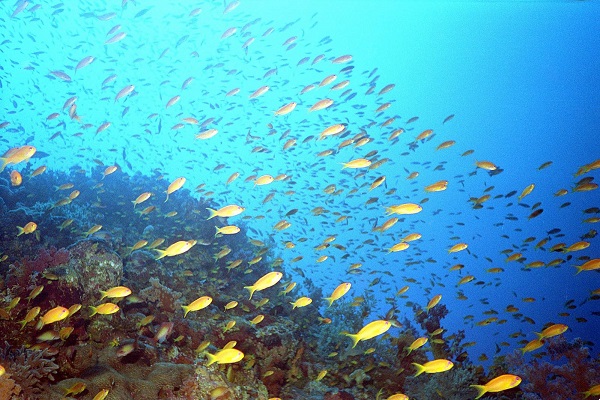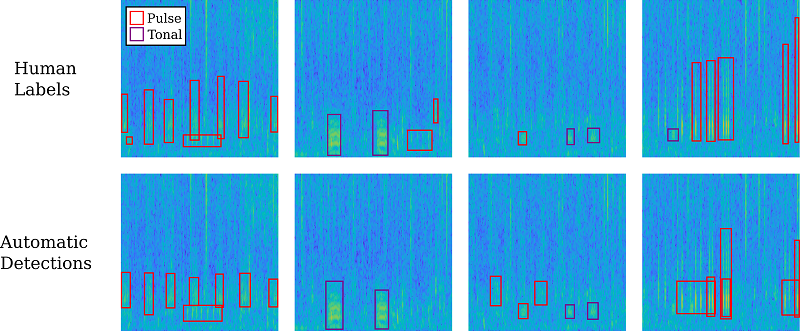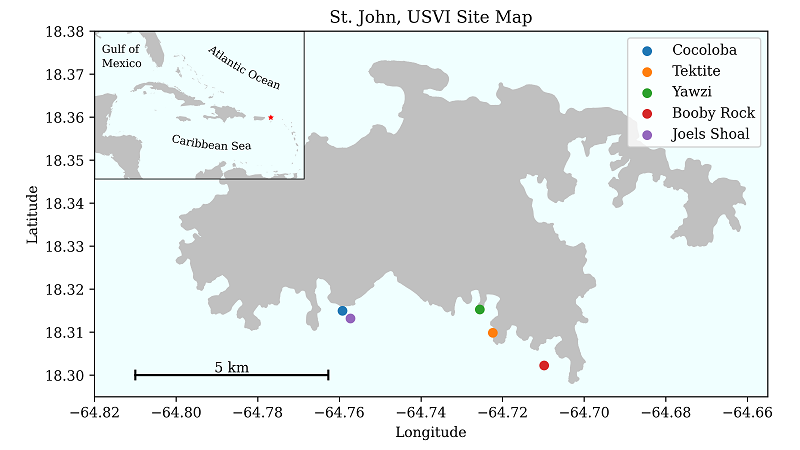Project Highlight: Using Machine Learning to Accelerate Detection of Fish Calls for Coral Reef Biodiversity Monitoring
 The underwater world is far from silent. Whales and dolphins are famous for their songs, chirps, and clicks. Yet, they aren't the only marine creatures who use sound. Fish and invertebrates add their own snaps, grunts, and pulses to the underwater chorus. Sound can act as a homing beacon to bring more fish and even coral larvae to settle on coral reefs. Measuring this soundscape can tell us information about the biodiversity of a coral reef, a critical component of reef health.
The underwater world is far from silent. Whales and dolphins are famous for their songs, chirps, and clicks. Yet, they aren't the only marine creatures who use sound. Fish and invertebrates add their own snaps, grunts, and pulses to the underwater chorus. Sound can act as a homing beacon to bring more fish and even coral larvae to settle on coral reefs. Measuring this soundscape can tell us information about the biodiversity of a coral reef, a critical component of reef health.
WHOI scientists Seth McCammon (AOPE) and Aran Mooney (Biology), along with research assistants Sierra Jarriel (Biology) and Nathan Formel (Biology) have developed a fish call detector to accelerate analysis of a decade worth of reef soundscape recordings and for real-time monitoring of reef sound with robots, drifters, and moorings. The detector uses Convolutional Neural Networks, a machine learning algorithm to detect fish calls and separate them from background noise, even when boats or other human activity alter the soundscape of the reef. The detector achieves 60-70% accuracy compared to human annotators, while taking only 0.05% of the time (a speedup factor of 2000x)!

Plots showing automatically-detected fish calls (lower) compared with human-detected calls (upper) for two different types of fish calls. While in some cases, the detector fails to identify calls (column 2), in others it picks up on calls missed by the expert annotators (column 3).
Coral reef ecosystems host some of the highest diversity of life on Earth including about one-quarter to one-third of all marine animals at some point in their life cycle. Yet coral reefs worldwide are under tremendous pressure. We’ve lost more than a quarter of the world’s coral reefs in the last four decades, and coral reef loss continues at an accelerating rate of one to two percent per year. Reef degradation is driven by a complex combination of global ocean warming, acidification, and local anthropogenic impacts such as eutrophication and overfishing.
The fish call detector was developed to improve biodiversity estimates in areas like these while assessing the response of reef ecosystems to disturbance and change. By automating the tedious step of identifying fish calls in recordings of coral reefs, we can study changes in the number and types of fish calls over decades, providing new understandings of how the biodiversity of these threatened habitats are changing over long time periods. Real-time measurement of biodiversity can also help target rapid intervention efforts by conservationists and inform decisions by policy makers with the most up-to-date data.
Our overall goal is to enable and enhance observations of reef health and biodiversity, which will support conservation and management of critical ecosystems. In addition to coral reefs, this work is applicable to monitoring of other complex ecosystems such as rainforests or wetlands, which face similar problems of biodiversity estimation.




